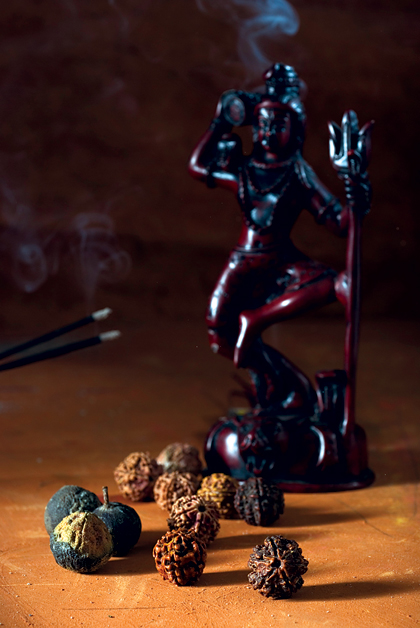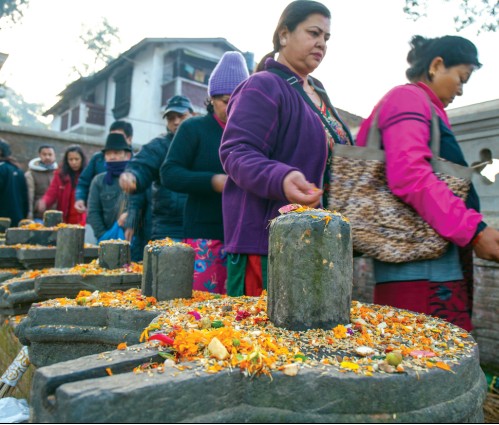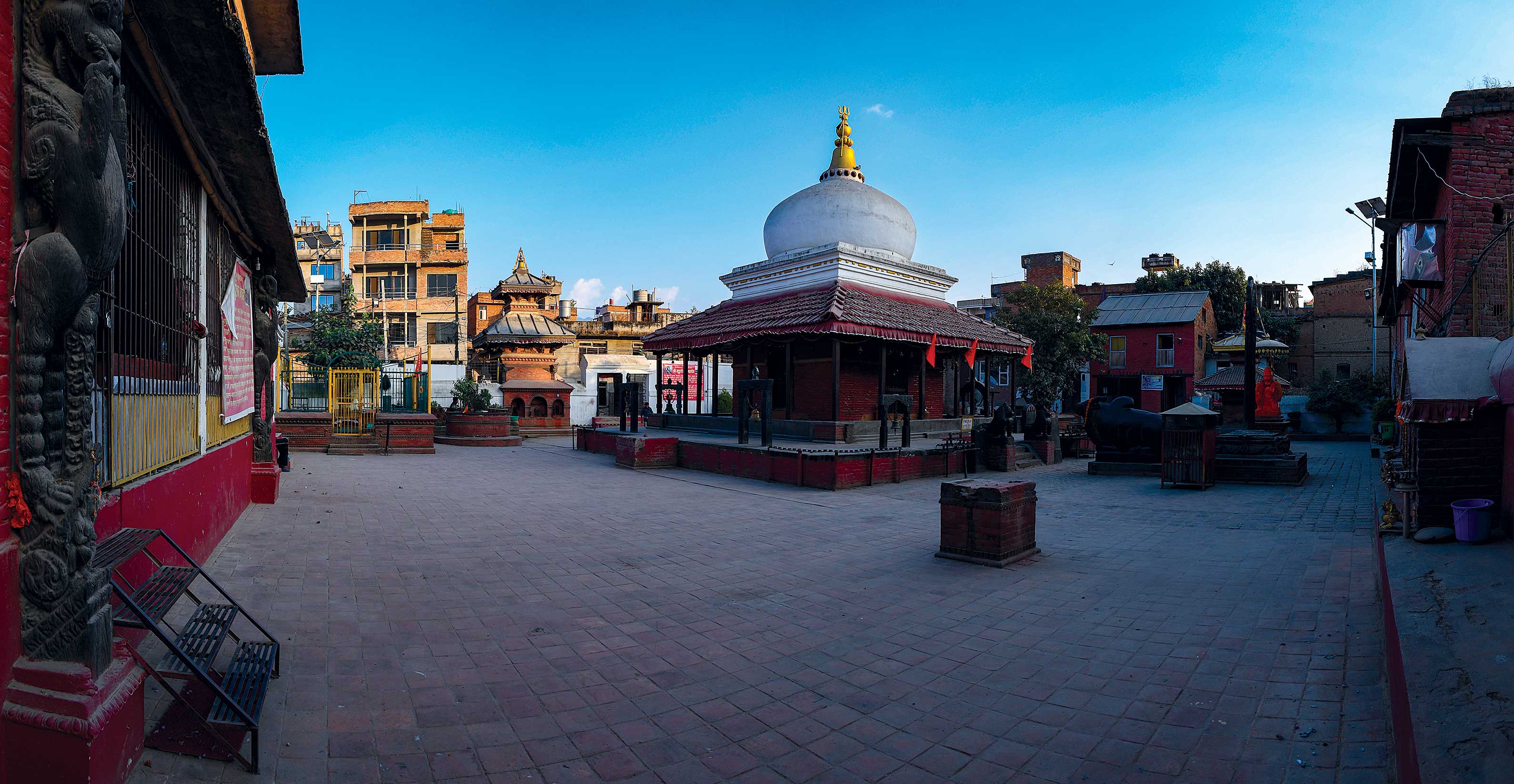“Hearing or reading the glory of Rudraksham can drive away the sins of anybody. Be devoted or not, scholar or illiterate, whomsoever it be, one who wears the Rudraksha will surely get rid of all the bad deeds. Philosophers call this Mahavrata. There is no deed more virtuous than wearing Rudraksha. One who gets adorned in a sincere and proper way with thousand Rudrakshas, all the divines will salute that person.” – Skanda Purana
 Reminiscing back to the early days, I remember my grandfather, a fairly religious man engaged in his morning puja or worship for long hours. Thanks to the curiosity of childhood, for me, the puja kotha, a small room separated for the very purpose, was more of an Ali Baba’s cave to hunt for strange treasures. Whenever left alone, I’d sneak into the room, climb onto a stool and rummage the cupboards where he stored ‘sacred’ objects, from crafted idols of deities to brass bell and damaru or pellet drum. Among them I never quite understood what made those necklaces made from rugged, maroon beads so special. The two other facts that intrigued me most were -
Reminiscing back to the early days, I remember my grandfather, a fairly religious man engaged in his morning puja or worship for long hours. Thanks to the curiosity of childhood, for me, the puja kotha, a small room separated for the very purpose, was more of an Ali Baba’s cave to hunt for strange treasures. Whenever left alone, I’d sneak into the room, climb onto a stool and rummage the cupboards where he stored ‘sacred’ objects, from crafted idols of deities to brass bell and damaru or pellet drum. Among them I never quite understood what made those necklaces made from rugged, maroon beads so special. The two other facts that intrigued me most were -
Lord Shiva was portrayed wearing it around his neck and in his arms. And my elders forbade me from playing with it. “You can’t touch it, its holy,” they would snap at me, leaving me with a guilty feeling.
I never quite dwelt on my fascination with the subject, but growing up in a Hindu society, I was lead to the facts on Rudraksha bit by bit. Rudra is the fiercest form of Lord Shiva and Aksha means eyes in Sanskrit. According to the Puranas, ancient Hindu texts, Rudraksha literally means what is born out of Lord Shiva’s eyes. The story tells that the three demons, Tripurasura, caused great mayhem on earth. Troubled by this, the gods summoned Lord Shiva, pleading protection against the demons. On opening his half closed eyes from meditation, the Lord burnt down the forts of the demons. However, since the demons were sincere devotees of Shiva, their lives were spared. It is believed that a tear rolled out of his eye when burning the Tripuram, the demons’ forts, and this single drop of tear from Shiva’s eye grew into a Rudraksha tree.
The Rudraksha tree, botanical name Elaeocarpus Ganitrus Roxb, is called blueberry tree and is found in the tropical and sub-tropical areas at an altitude of 2,000 m above sea level. It bears a green-colored fruit with hard seeds during the month of June. It is this seed of the fruit that is used as Rudraksha bead. These seeds, about an inch in diameter, are round and grooved. These grooves are referred to as mukh or faces of the Rudraksha. A seed can have faces ranging from one to as many as 108. Among them the one-faced Rudraksha is considered the ‘King of all Mukhis’. Ek Mukhi (one-faced) Rudraksha is rare and religiously very important. It is believed to represent pure conscience. It is also believed to control physical dysfunction of the right eye, headache, ear ailments as well as depression. While seeds having 2 to 21 faces are the most common, the others with 22 to 108 are considered almost extinct. Researches have shown that among all of them, Rudrakshas with five faces are the most abundantly found naturally. Rudrakshas also have magnetic properties with these being more pronounced in larger Rudrakshas with more faces.
As hard as I try, I really cannot recall what ‘mukhi’ the beads that hung in my grandfather’s sacred cabinet were. Were I to come across one, again, I’d, however, choose to do what he did with it – store it as a keepsake.

More than just your usual lapel pins
The lapel pin is a men’s accessory worn on the lapel of the jacket which serves as a...









